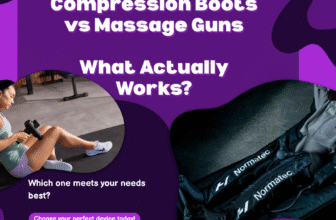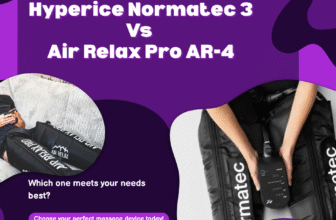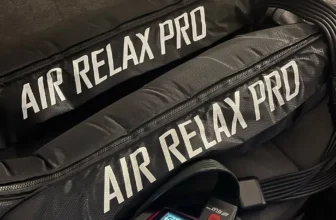Fitness Recovery Gear: What You Need and Why
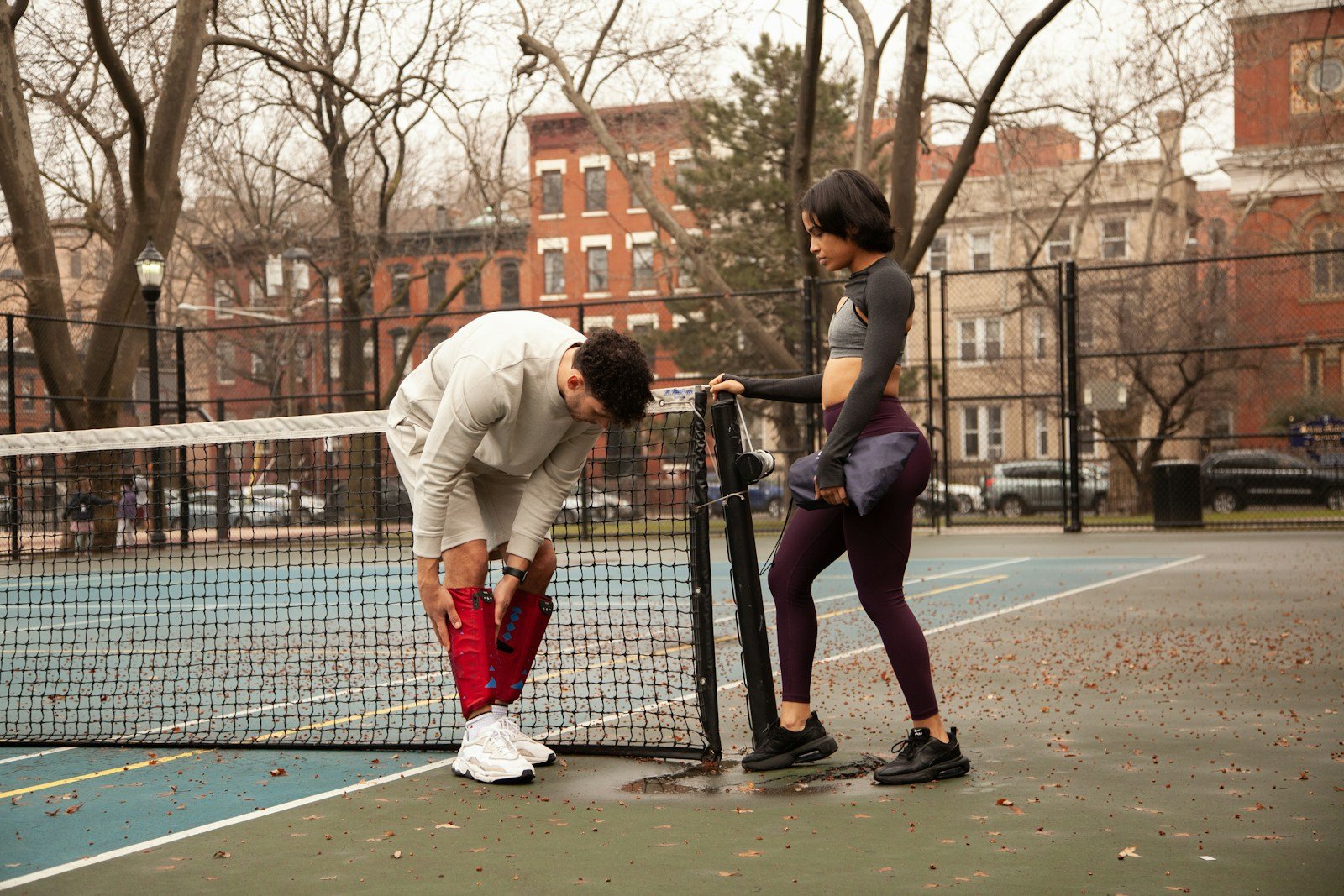
In the world of fitness, achieving optimal results demands more than just grueling workouts and meticulous nutrition planning—it’s fundamentally about recovery. Recovery plays an indispensable role in muscle repair, injury prevention, and overall fitness progress. Without proper recovery protocols, you risk physical and mental burnout, muscle strain, and significant performance setbacks. Whether you’re just starting your fitness journey or you’re an experienced athlete, utilizing the right fitness gear recovery kit can dramatically optimize your recovery process, minimize post-workout soreness, and substantially enhance your long-term performance outcomes.
This comprehensive guide will explore the essential fitness recovery gear you need, including specialized recovery roller fitness gear, massage guns, compression equipment, and various mobility aids designed for optimal recovery.
Why Fitness Recovery Gear Matters
When you engage in intense physical training, you consistently push your muscles beyond their comfort zone. During exercise, microscopic tears develop in muscle fibers, and it’s during the crucial recovery phase that your body initiates the rebuilding and strengthening of these damaged fibers. Without implementing proper recovery techniques and tools, this natural healing process becomes significantly delayed, potentially leading to extended periods of muscle soreness, persistent fatigue, or even serious injuries.
Making a strategic investment in high-quality recovery tools ensures your muscles repair more efficiently, substantially reducing the risk of overuse injuries and training plateaus. These specialized tools are specifically designed to enhance flexibility, promote better blood circulation, and facilitate deeper muscle relaxation. Let’s explore the most crucial recovery equipment that should be an integral part of every serious fitness enthusiast’s recovery arsenal.
1. Foam Rollers: The Essential Tool for Muscle Release
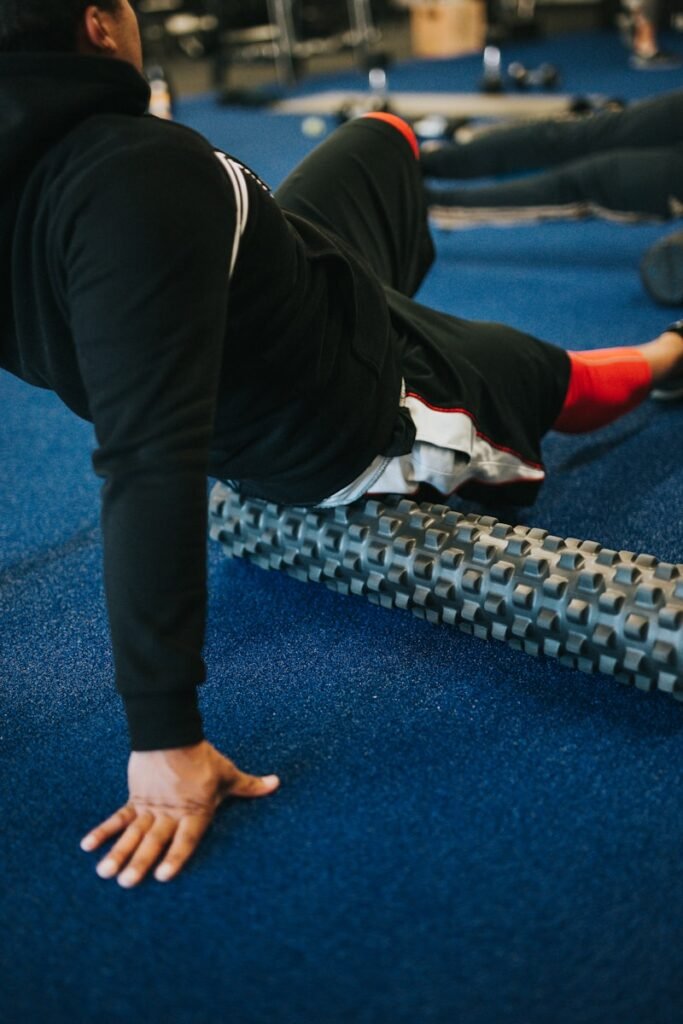
The fitness gear recovery roller, commonly known as a foam roller, stands as one of the most universally adopted and cost-effective tools for self-myofascial release. This therapeutic technique effectively addresses muscle tightness and trigger points, significantly reducing post-workout soreness while enhancing overall flexibility.
Benefits of Foam Rolling
- Reduces Muscle Soreness: The fitness gear muscle training/recovery stick is exceptionally effective at diminishing delayed onset muscle soreness (DOMS), a common challenge following intense training sessions.
- Improves Blood Flow: Through targeted pressure application, foam rolling significantly enhances circulation, facilitating faster healing and more efficient muscle recovery.
- Increases Flexibility: Consistent utilization can dramatically improve muscle elasticity and joint range of motion, crucial elements for optimal workout performance and injury prevention.
How to Use a Foam Roller
- Carefully identify specific areas experiencing tightness, such as your calves, quadriceps, or lower back muscles.
- Properly position the fitness gear recovery roller beneath the targeted muscle group.
- Execute slow, controlled rolling movements back and forth, applying appropriate pressure based on your comfort level.
- Dedicate approximately 1-2 minutes to each muscle group, paying special attention to particularly tender areas.
The fitness gear recovery wow factor becomes evident when foam rolling is consistently incorporated into your post-workout routine, delivering maximum recovery benefits and enhanced performance results.
2. Massage Guns: Modern Recovery Technology
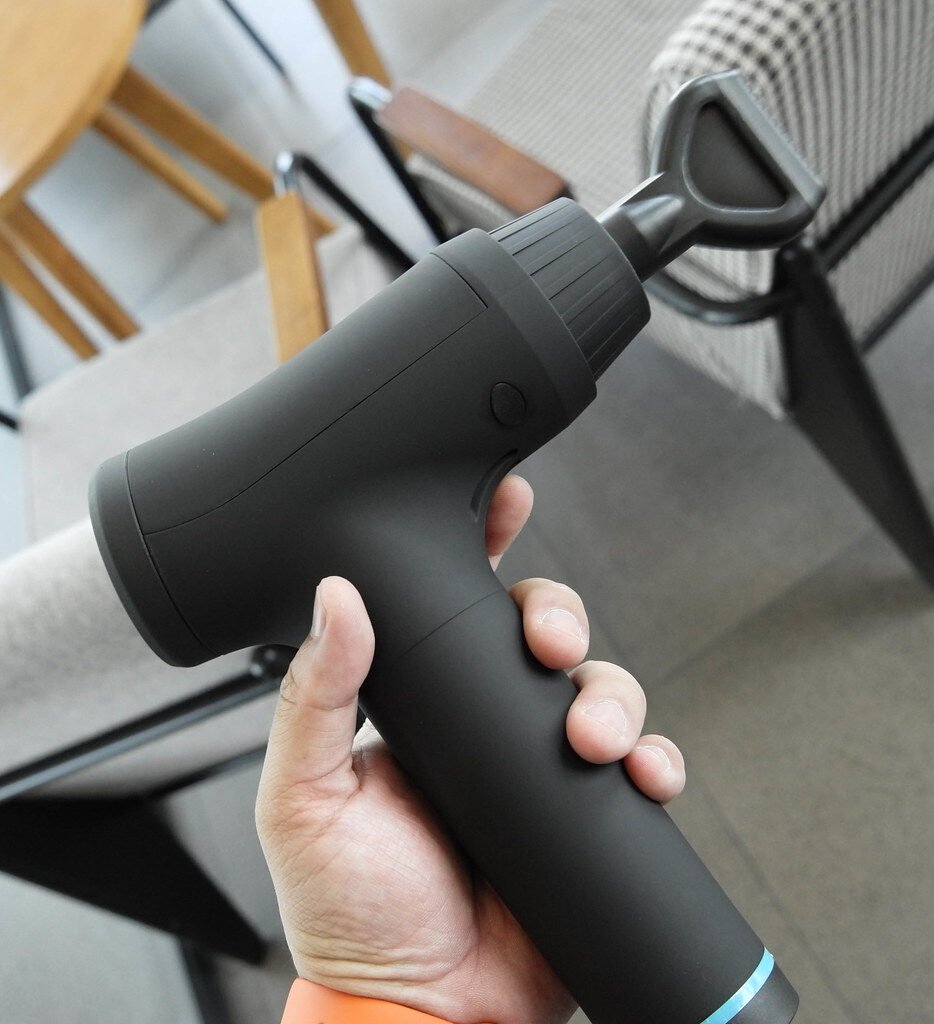
Massage guns have rapidly emerged as a game-changing innovation in the fitness recovery landscape, primarily due to their remarkable ability to deliver deep tissue massage through a convenient, portable device. These sophisticated tools utilize rapid percussive movements to effectively stimulate blood flow and address muscle tightness with unprecedented precision.
Advantages of Using Massage Guns
- Targeted Relief: Massage guns offer unparalleled precision in targeting specific muscle groups, allowing users to pinpoint exact areas of tension and discomfort. The concentrated percussive therapy penetrates deep into muscle tissue, breaking up adhesions and knots while ensuring therapeutic relief exactly where it’s most needed. This targeted approach makes them particularly effective for addressing chronic problem areas or acute post-workout soreness.
- Faster Recovery: The high-frequency pulsations generated by massage guns create powerful vibrations that significantly enhance blood circulation and effectively reduce muscle fatigue. This increased blood flow delivers more oxygen and nutrients to recovering muscles while efficiently removing metabolic waste products. The result is dramatically accelerated recovery times, allowing athletes and fitness enthusiasts to return to peak performance more quickly. Studies have shown that regular use of massage guns can reduce recovery time by up to 30% compared to passive recovery methods.
- Convenient and Portable: Modern massage guns are engineered with portability in mind, featuring compact, lightweight designs that make them ideal companions for active individuals. Their portable nature ensures you can maintain your recovery routine whether you’re at home, at the gym, or traveling. Most models come with convenient carrying cases and long-lasting batteries, making them perfect for on-the-go recovery after intense workouts or competitive sports activities.
How to Use a Massage Gun
- Choose the appropriate attachment for the muscle group you’re working on, considering factors like muscle size, sensitivity, and specific recovery needs. For example, use larger attachments for major muscle groups like the quadriceps and smaller, more precise attachments for targeting trigger points.
- Select your preferred speed or intensity level based on your recovery goals and muscle sensitivity. Begin with lower settings and gradually increase intensity as needed. Most professional-grade massage guns offer multiple speed settings to accommodate different recovery needs.
- Gently apply the massage gun to sore areas, moving it around for 1-2 minutes per muscle group. Maintain steady pressure and avoid staying in one spot for too long. Focus on sweeping motions that follow the muscle fibers’ direction for optimal results.
Massage guns represent a revolutionary advancement in recovery technology, making them an indispensable component of any comprehensive fitness gear recovery kit. Their effectiveness in reducing post-workout soreness and enhancing muscle repair has made them increasingly popular among both professional athletes and fitness enthusiasts. When combined with other recovery tools like the fitness gear recovery roller and fitness gear muscle training/recovery stick, massage guns provide a complete solution for optimal recovery.
3. Compression Gear: Support for Active Recovery
Compression gear, such as sleeves, socks, and full garments, applies consistent pressure to muscles and joints, creating a supportive environment that promotes recovery and performance. This specialized equipment works by applying graduated compression, which means the pressure is highest at the extremities and gradually decreases toward the heart, optimizing blood flow and lymphatic drainage.
Key Benefits of Compression Gear
- Improved Circulation: By strategically enhancing blood flow, compression gear effectively flushes out metabolic waste products and reduces exercise-induced swelling. This improved circulation is crucial for maintaining optimal muscle function and accelerating the recovery process.
- Muscle Support: High-quality compression garments provide targeted muscle support during physical activity, significantly reducing muscle oscillation and the risk of strain or injury. This enhanced support contributes to better performance and reduced fatigue during workouts.
- Reduced Muscle Soreness: Through its combination of compression and support, this gear can substantially accelerate recovery by promoting faster muscle repair and reducing post-exercise soreness. Many athletes report experiencing less delayed onset muscle soreness (DOMS) when using compression gear consistently.
How to Use Compression Gear
- Wear compression sleeves or socks during workouts to provide additional support and enhance blood flow to working muscles. This can help maintain muscle temperature and reduce fatigue during exercise.
- Use full compression garments after workouts to help reduce swelling and speed up recovery. Many athletes benefit from wearing compression gear for several hours post-exercise or even during sleep for maximum recovery benefits.
Compression gear stands as a vital component in any serious athlete’s fitness gear recovery wow arsenal, offering scientifically proven benefits for both performance and recovery. It’s particularly valuable for those engaging in long-duration or high-intensity training sessions, where muscle support and recovery are paramount for continued progress.
By integrating mobility aids into your recovery routine, you can enhance your flexibility and prevent injuries, ensuring that you stay healthy for your next workout. These essential components of a comprehensive fitness gear recovery kit play a crucial role in maintaining optimal performance and preventing training setbacks.
5. Cold and Heat Therapy Tools: Temperature-Based Recovery
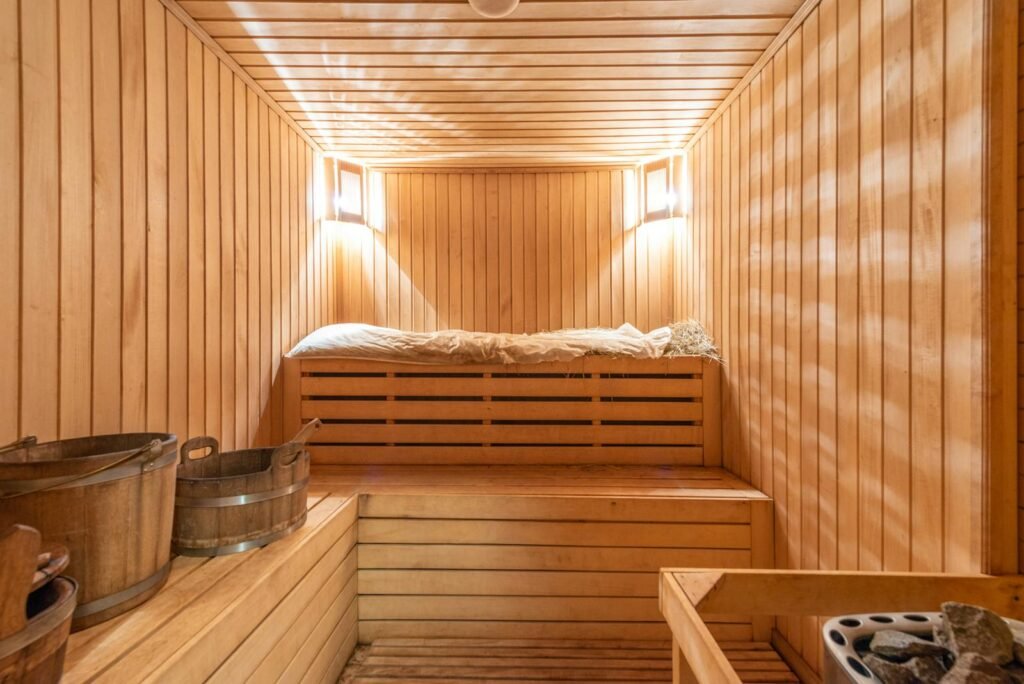
Cold and heat therapy are proven methods for reducing muscle soreness and improving recovery. Many athletes swear by these temperature-based therapies to speed up recovery after tough workouts or competitions. When combined with other recovery tools like the fitness gear recovery roller and fitness gear muscle training/recovery stick, temperature therapy creates a powerful synergistic effect for enhanced recovery.
Cold Therapy
Cold therapy, or cryotherapy, involves using cold packs or ice baths to reduce inflammation and numb soreness. This therapeutic approach has been extensively studied and validated by sports medicine professionals as an effective recovery strategy, particularly when used alongside a fitness gear recovery wow system.
- Benefits: Reduces swelling, prevents muscle breakdown, and reduces pain after intense exercise. Cold therapy also helps minimize inflammation-induced tissue damage and accelerates the body’s natural healing processes, making it an invaluable component of any serious athlete’s recovery protocol.
Heat Therapy
Heat therapy uses warm packs or heating pads to relax muscles, increase blood flow, and promote healing. This method complements other recovery tools, such as the fitness gear recovery roller, by preparing muscles for deep tissue work and enhancing their receptivity to therapeutic interventions.
- Benefits: Relieves muscle stiffness, improves flexibility, and promotes relaxation. Heat therapy also enhances nutrient delivery to recovering muscles, accelerates metabolic waste removal, and helps maintain optimal tissue pliability for improved performance.
How to Use Cold and Heat Therapy
- Apply cold packs to sore muscles for 15-20 minutes post-workout to reduce swelling. For maximum effectiveness, integrate this with other recovery techniques such as compression and elevation to create a comprehensive recovery strategy.
- Use heat pads for 15-20 minutes on stiff muscles before workouts or as part of a recovery routine to loosen up tight muscles. This preparation phase is particularly important when planning to use other recovery tools like the fitness gear muscle training/recovery stick.
Both cold and heat therapy are effective ways to support recovery and muscle relaxation, making them valuable additions to your recovery toolkit. When properly integrated into a comprehensive recovery program, these temperature-based therapies can significantly enhance the effectiveness of other recovery methods.
Conclusion
Fitness recovery is just as important as the workouts themselves. While it’s easy to focus on strength training, cardio, and flexibility during your fitness journey, you should never overlook the importance of recovery. Incorporating the right fitness recovery gear into your routine—whether it’s foam rollers, massage guns, compression gear, mobility aids, or cold and heat therapy—can make a world of difference in enhancing your recovery process, reducing muscle soreness, and preventing injuries.
By adding these tools to your fitness routine, you’ll be well-equipped to recover faster, perform better, and continue your fitness journey without interruption. Remember, effective recovery isn’t just about resting—it’s about actively promoting healing and muscle growth to come back stronger than ever. A well-planned recovery strategy, supported by quality fitness gear and recovery equipment, is the key to sustainable progress and long-term athletic success.
FAQ:
1) Why is fitness recovery gear important?
Fitness recovery gear helps in muscle repair, injury prevention, and overall fitness progress. Without it, you risk burnout, muscle strain, and performance setbacks.
2) What are the benefits of using foam rollers?
Foam rollers reduce muscle soreness, improve blood flow, and increase flexibility. They are cost-effective tools for self-myofascial release, enhancing overall recovery.
3) How do massage guns aid in recovery?
Massage guns offer targeted relief, faster recovery, and are convenient and portable. They enhance blood circulation and reduce muscle fatigue with high-frequency pulsations.
4) What advantages does compression gear offer?
Compression gear improves circulation, provides muscle support, and reduces muscle soreness. It’s essential for maintaining muscle function and accelerating recovery.



